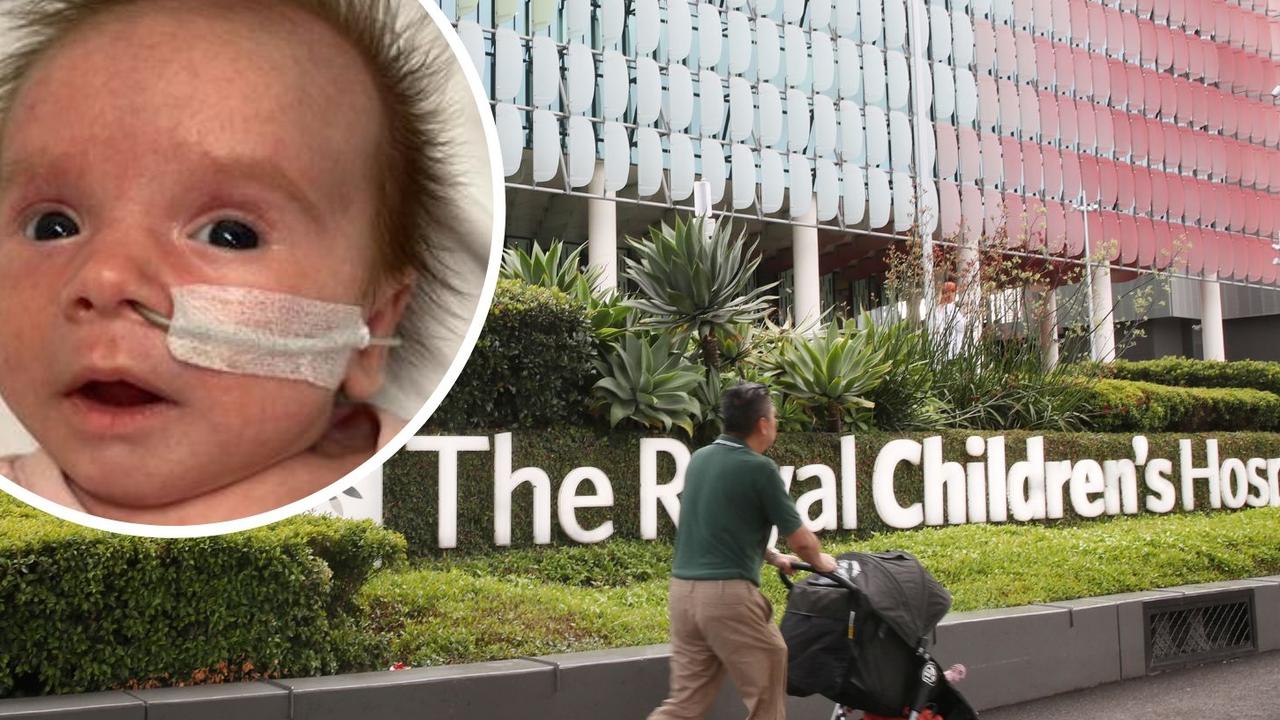Listed: Meet South Australians behind 12 of the state most exciting start-ups to get behind in 2024
The moment a tween saw Tom Cruise tear across the sky in Top Gun defined his future, now he’s on track to bring “robot warfare” production to the northern suburbs.
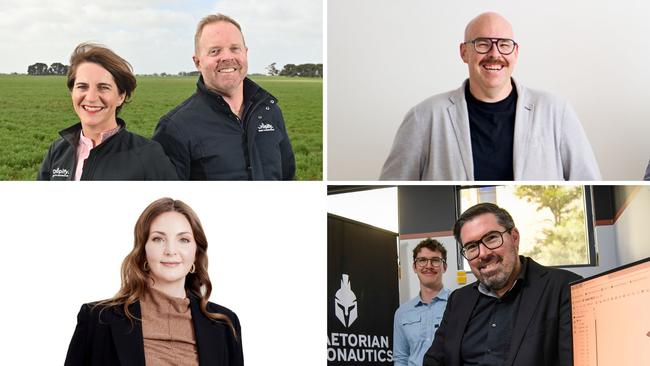
SA News
Don't miss out on the headlines from SA News. Followed categories will be added to My News.
On a bright, blustery Wednesday afternoon on a courtyard several floors up at the Lot 14 innovation centre on North Terrace, a couple of dozen budding entrepreneurs gather for their weekly catch-up.
There is a table full of doughnuts, watermelons and other treats and the crowd gives off a vibey, enthusiastic hum that feels more like friends gathering than business colleagues assembling.
Usually, they meet downstairs at Lot 14, but today’s weather is a welcome break from bleak winter and there is much chatter about the warmth of the day.
Dr Tim Mahlberg Sie calls the gathering to order and gives a quick run down of upcoming events and then asks if anyone would like to give an update on recent successes or if any of the new start-ups who have recently taken up residence in Lot 14 would like to introduce themselves.
One ventures forward to share a recent securing of a government grant, another to talk of an export order won.
Mahlberg Sie is SA head of entrepreneurship for Stone & Chalk which acts as a kind of co-ordinator, mentor, parental figure for the 173 residents from 54 start-up companies who are based at Lot 14, the site of the former Royal Adelaide Hospital. Since it started in 2017, companies in the start-up hub have raised more than $200 million in capital and have a combined value of $390 million.
SCROLL DOWN TO MEET THE PEOPLE BEHIND 12 SA START UPS

But Lot 14 is only piece of the start-up culture in SA. There are also exciting developments in places such as Tonsley Innovation District, the New venture Institute at Flinders Uni, ThincLab at Adelaide Uni, the Innovation and Collaboration centre at UniSA, as well as outfits such as the Smart Cities Council.
Mahlberg Sie talks a lot about the ‘culture’ of start-ups and the ‘environment’ and ‘ecosystems’ at Lot 14. He says the start-up scene in SA is attracting attention from potential investors across Australia and globally.
“What I’ve probably been seeing over the last couple of years is, you know, folks who are in Sydney who are like, ‘wow, there’s some really interesting things happening in South Australia’,’’ he says. “They’re building impactful, sustainable businesses that are going global and we want to be a piece of that action.’’
The importance of the companies, according to Mahlberg Sie, is that they are solving real-word problems. They are using the latest technological advancements and applying them everywhere from agriculture, to climate change, to space and sporting venues.
“We see that through the businesses, they’re all here focused on what are outcomes for South Australians, what are outcomes for our community, and what are problems that have gone unsolved globally, that could be built and solved from South Australia and exported,’’ he says.
Praetorian Aeronautics
When he was 12 years old, Brett Hill watched Tom Cruise tear across the sky fighting Russians in Top Gun and knew what he wanted to do with the rest of his life. But Hill didn’t want to emulate Cruise and become a fighter pilot. Hill wanted to design his plane.
“Everyone else wanted to be a pilot and I thought that looks a little bit easy, but seriously, making aeroplanes looks so much fun,’’ he says.
And that is what he did. Now, 44, Hill is back in Adelaide after a globetrotting career helping design aircraft for companies, including Boeing, and has started his own company Praetorian Aeronautics which will manufacture drones that will help destroy other drones. Drones like the ones fired every day by Russia at Ukraine and which have caused such destruction.
“Basically one way to think about it is robot warfare,’’ Hill says in a meeting room at the Core Innovation Hub down the back of Lot 14.
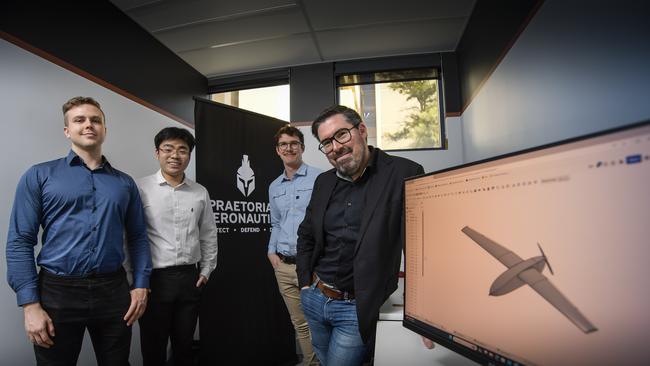
Hill has grand plans for Praetorian, which he started in November 2022. At the moment he has around seven full-time staff and six part timers.
In “four or five years’ time’’ he believes there will be as many as 250 people working in Praetorian’s new facility that will be building drones. It’s a factory that he wants to build in Salisbury or Elizabeth because that’s where he grew up.
It wasn’t only Top Gun that changed Hill’s life when he was 12. One Saturday morning, his mother sent his to sit an exam without telling him what it was for. What it did was win him a scholarship to Adelaide most prestigious school, St Peter’s College. It was a big moment for a boy from the northern suburbs who would never have been able to afford such an education. It was a single-parent family, with Hill’s father dying from cancer when he was four.
Hill remains grateful for the opportunity it gave him to have a top-notch education, even if he was “pretty sure I was the first Salisbury boy’’ to turn up at Saints.
“I was simultaneously, quite often, the smartest kid in my class and definitely the poorest,’’ he says.
After school, to the disappointment of some, including his mother he decided he didn’t want to become a doctor or a lawyer, and stuck with his dream of building aircraft.
“I remember when I told people I wanted to be an engineer, they were devastated, they thought that was a complete waste of my time,’’ he says.
Hill moved to Melbourne when he was 18 and studied aerospace engineering at RMIT. He remained at uni and completed a PHD which predicted how fighter jets would react in a dogfight.
Then it was on to Boeing. He was based in Melbourne and a stint in Boeing’s Seattle base which he describes as” two of the best years of my life’’. He even loved the relentless rain for which Seattle is famous.
“It’s the most different place to South Australia you can imagine because it’s mountainous, these beautiful forests, and it’s green,’’ he says.
Hill worked on designs for Boeing aircraft including the 787 Dreamliner, the 777X and the 747-8 as well as in the company’s military division.
Boeing has been in the news for all the wrong reasons in recent years but Hill has no doubt it will bounce back.
“The people who work there that I know, and I know many people who work there, are the most diligent, responsible, passionate people you ever meet, so it’ll be fine,’’ he says.
Hill left Boeing after 10 years and moved to Germany. His then wife was a ballet dancer and it was a career move for her. In Germany, Hill diversified and worked in renewable energy and energy efficient housing.
After the pandemic he decided to head back to Australia and in 2021 landed in job with the electric flying car company Airspeeder. He worked at Airspeeder for 18 months and says he learnt a lot, including about how to run a company and marketing but decided it was time to strike out on his own.
“I wanted to build something in South Australia, something that I loved doing. I wanted there to be the opportunity to do what I didn’t get to do, which was to stay in South Australia when you left university,’’ he says.
The idea that Hill had was to build defensive drones. He could see the rise in drone warfare but didn’t think the big defence companies such as Raytheon, Lockheed Martin and BAE Systems focus on the big end of the market
“Raytheon builds million dollar three, $4 million missiles. They don’t build $300,000 drones,’’ he says.
“We lionise Anzac Day rightly, we make a big deal about remembering those who’ve made the ultimate sacrifice,’’ he says. “I thought, well, that’s great, but it would be even better if we made sure that the people who actually protect us now have everything they need to do it, because they’re the ones who actually going to put their necks on the line.’’
Hill thinks his drones will actually deter attacks from enemies. That it will help show Australia is not a “soft target’’.
As seen in Ukraine and elsewhere, military drone attacks are becoming more prevalent. And more sophisticated. Hill says the way to counteract drones used to rest on jamming their radio signals.
But those drones are now autonomous and therefore they need to be taken down by other means. Hence, Hill’s talk of “robot warfare’’.
When a drone attack is detected, Praetorian’s drones are sent to meet it.
“It flies out there, targets the drone, hunts it down and destroys it, so it explodes,’’ he says.
There is a human in the loop but the drones are an AI-based system that detects the targets, tracks them and engages with them.
The drones can be sent from the ground but Hill says there is also a “mothership’’ in development that will be able to fly with multiple drones.
In a perfect world, Hill says his drones would already be in use in Ukraine, helping defend the country from the Russian aggressors.
“You have no idea how much I wish I’d started two years earlier,’’ he says.
Hill has developed his company backed by venture capital investors and is hoping that by 2026 there will be a factory in the northern suburbs producing Praetorian drones.
There are aims to make 10,000 drones a year, then 20,000 and within five years employing as many as 500 people is the goal.
But that’s only the short term aim. Hill has even bigger aspirations. And as a former Boeing employee, he knows that company’s origin story. One that started when William Boeing bought a “red barn’’ in Seattle in 1915.
“I’d love to get to the size of a Boeing one day, you’ve got to dream, you’ve got to dream big.’’
Seonix Bio
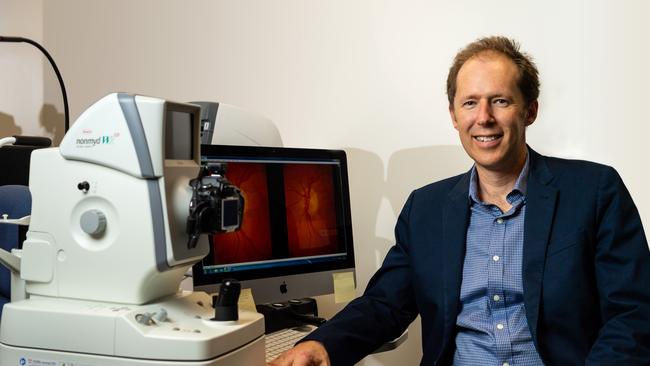
Seonix Bio was founded to protect vision using genetics.
Glaucoma is the leading cause of irreversible blindness worldwide. Known as “the sneak thief of sight” it is often unnoticed in the early stages, with 50 per cent of glaucoma undiagnosed in Australia.
Fortunately, glaucoma is treatable if detected early. Using world leading research by Professor Jamie Craig at Flinders University and collaborators, Seonix has developed a saliva-based genetic risk assessment service, called SightScore, to identify those patients at highest risk, so any glaucoma can be identified and treated earlier.
It is used by optometrists and ophthalmologists to manage those with a family history, signs of glaucoma, or diagnosed glaucoma.
Led by experienced entrepreneur Nick Haan, Seonix’s test has been adopted by around 80 practices in Australia and New Zealand and is shortly to launch in the US, with a range of other eye conditions to be offered in future.
Wound Innovations

Wounds are a hidden epidemic. Around 430,000 Australians have long term wounds such as leg ulcers, pressure wounds and diabetic foot ulcers. People with wounds are often in pain and find it difficult to move, and living with a wound can lead to depression and isolation.
Wound Innovations Ltd (WI) is a rapidly growing specialist wound service improving access to best practice to improve quality of life for patients and reduce hospitalisations.
WI was established in 2018 and has since carried out more than 40,000 face-to-face and telehealth appointments nationwide. The innovative WI treatment approach heals wounds, improves quality of life for patients, educates the aged care workforce, and reduces the financial burden of wounds to public health by reducing avoidable hospitalisations.
The WI head office is proudly based in Tonsley, SA and is helping provide a solution to the issue of chronic wounds in Australia.
Cropify
Wife-and-husband team Anna Falkiner and Andrew Hannon are not exact when talking about how much of their own money they have sunk into the agricultural company Cropify which uses AI to grade grains but estimate it’s in the “hundreds of thousands’’.
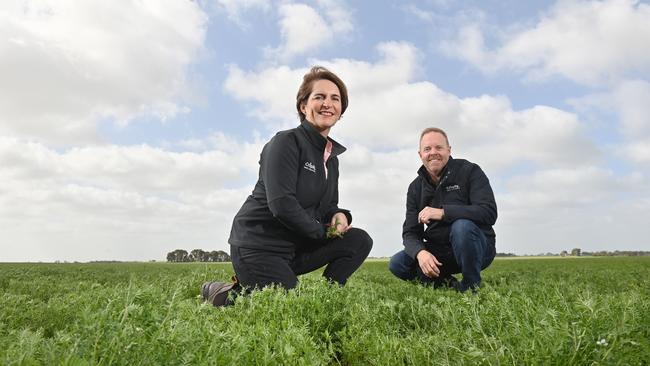
There has been some help along the way with grants from the Australian Institute of Machine Learning and the state government, but essentially the couple have, in the language used by start-ups everywhere “bootstrapped’’ their business in order to give it life. That is they have more or less paid their own way.
“We bootstrapped until May last year,’’ Falkiner says. “Then we went, ‘right line in the sand, we’ve got our really high functioning prototype’.
“We’ll show it to potential customers, and we’ll show it to potential investors and start raising capital.’’
Since then Cropify has raised almost $2 million from a variety of investors. In February it took on its first employee and its workforce is now up to seven. And it plans to “commercialise’’ its product in March next year.
Falkiner is a marketer who has worked with a string of companies including the Adelaide Strikers but comes from five generations of farmers. Hannon has a long history in the grain industry, including working for bulk handler Viterra.
What they want Cropify to do is become an industry standard when it comes to judging the quality of grains. There are standards which the quality of grains are judged against but they are subjective. They are carried out by experts but Hannon says that if three different people looked at a selection of grain “there’s a possibility that we all come up with three different results based on our own visual assessment of that’’.
“There are standards that set the testing regime to drive the value of a crop as it comes in a truck, but roughly 50 per cent of that is done subjectively, and it’s always been a major pain point, not just in Australia, but globally,’’ Falkiner says.
And that matters because a different grade can cause a farmer to receive a lower price for their product. Hannon estimates there can be as much as a 30 per variance in a price a farmer could receive depending on the quality of the crop.
But it’s not just at the farm gate where the grain is classified. The quality is tested at every step down the chain, the farmer is only the “first seller’’ of the grain.
It’s potentially a huge market. Falkiner estimates there as many as 5 million tests done annually in Australia. Cropify will start grading lentils, then intends to move onto pulses, chickpeas, lupins, wheat and barley.
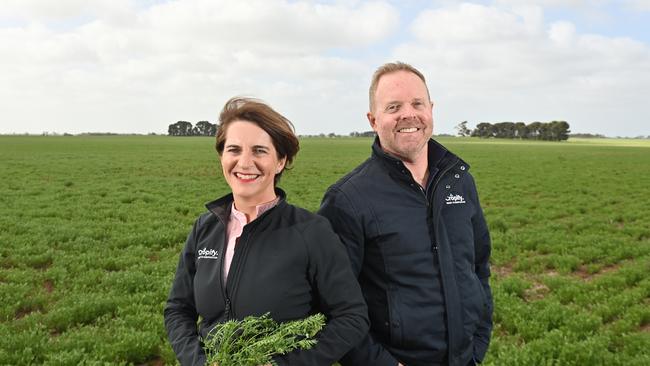
Cropify says it can take out the guesswork and standardise the system. Falkiner says the tech was developed with the help of the Australian Institute of Machine Learning, but essentially it works as a light box fitted out with a bunch of cameras that take pictures.
Inside the box are also a variety of trays the sort the grains. Then pictures are taken.
“It goes up to the cloud. All our smarts are in the cloud. It analyses and then all the images and the results come back down, that’s basically it,’’ Falkiner says.
Cropify will lease the hardware and the software to customers. The idea being that if an element such as cameras need updated they will take it all back and install an upgrade.
Falkiner says it was vital to ensure the prototype was as good as possible. Many years ago, a similar product was tried but was seen as unreliable. The product was ahead of its time but the technology wasn’t good enough.
“Our whole thing was get this prototype working, spend a bit more money and time on than we really would normally in a different product, because the industry’s seen something that didn’t work before,’’ she says.
It has taken more than three years to get to this stage, but Falkiner and Hannon believe they are now ready to go. With the help of a government grant they are also about to head to Canada to a trade fair to push the company further. And then possibly into the US.
“So Canada’s definitely on the radar after Australia, build Australia next year, and then do all the development for Canada, while we’re commercialising in Australia,’’ Falkiner says.
Infinitus Aero
Infinitus Aero is manufacturing electric propulsion systems for fixed-wing, light sport and general aviation aircraft.

Its vision is to provide a solution to growing environmental challenges, particularly with aviation emissions globally, with the introduction of their E22 Spark entering the flight training market by 2026.
The E22 Spark will have an electric battery system and motor components that will work together to create a propulsion system.
With zero fossil fuel burning over the lifetime of the aircraft, the environmental and economic savings are significant.
Fuel savings, reduced maintenance costs and increased productivity for flight training schools have all been key factors of interest from organisations globally – with one of Air New Zealand’s preferred aviation colleges confirming a request for six of the first aircraft from Infinitus Aero.
As battery technology rapidly develops and improves, the Infinitus Aero team is continuing to refine the E22 Spark for test flight program later in 2024, then start manufacturing in 2025 with ‘zero emissions and zero boundaries’ the global aim for this emerging business.
CYBR

CYBR was founded to challenge the narrative that cyber security is out of reach for most businesses. CYBR wants to show that while cyber security is serious, improving it does not have to be. CYBR is committed to empowering organisations to take control of their cyber security with confidence regardless of where they are in their maturity journey.
CYBR offers more than just cyber security consulting; it simplifies the complexities and build internal resilience and capability. Its approach blends practical strategies, advanced technology, and a genuine commitment to making cyber security both approachable and empowering for every business.
CYBR aims to help organisations turn what once seemed overwhelming into a manageable, even strategic, advantage.
It says its success is reflected in its work with clients, and in its role as mentors in the Australian Government’s Digital Solutions program, where it has contributed to “uplifting the cyber capabilities of small businesses across South Australia, ensuring every organisation is ready to thrive in the digital age”.
Outhire

Outhire is an AI powered employer branding platform focused on simplifying talent attraction by leveraging authentic employee stories and automating social media campaigns. It helps companies differentiate themselves in the crowded job market by using genuine employee videos that highlight their unique culture and values.
These videos are repurposed and amplified across key social channels like Facebook, Instagram, and TikTok, creating a consistent and compelling brand narrative.
“The problem we’re solving is how to attract top talent in a way that is authentic and engaging, especially for companies competing with larger budgets,” Outhire, which was co-founded by Will Russell and Matt Bauer, says.
“Our platform’s standout feature is its ability to reuse content efficiently, enabling companies to maximise their storytelling efforts throughout the recruitment process.
“We’ve already seen success with customers like Anglicare SA and SYC, and we’re gaining traction in both the Australian and US markets. Outhire is dedicated to making talent attraction more human, effective, and impactful.”
Flamingo Logic

Flamingo Logic, a local start-up founded by industry experts Matt Law and Adam Sawtell, has developed AbilityERP software to revolutionise how organisations providing services to NDIS participants manage their operations, deliver services, handle financials, and adhere to quality and safeguarding standards.
The transition to the NDIS has presented significant challenges for service providers, complicating their ability to manage complex requirements and maintain high-quality services. AbilityERP is a comprehensive business suite designed to overcome these challenges by streamlining service delivery, reducing administrative burdens, enhancing employee satisfaction, and providing real-time, easy-to-access business reporting. Traditionally, these organisations have relied on multiple stand-alone ICT applications to perform essential business functions. AbilityERP simplifies this process with a single source of truth, significantly reducing the need for disparate systems.
Since AbilityERP’s inception, Flamingo Logic has partnered with SA and interstate businesses, driving substantial improvements in their operations. Flamingo Logic says it “is committed to continuous innovation and ensuring our customers achieve the best possible outcomes, making us a trusted partner in the industry”.
Sprout Materials
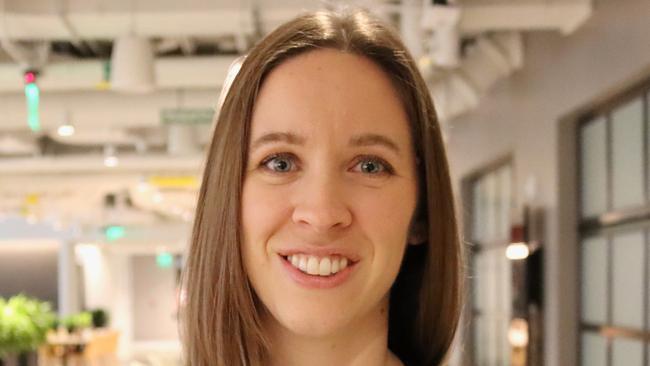
Sprout Materials manufactures home compostable bioplastics to eliminate plastic waste and reduce fossil fuel consumption. Of the 400 million tonnes of plastic produced each year, 98 per cent are made from fossil fuels, leading to nearly 2 billion tonnes of greenhouse gas emissions.
Sprout Materials is using proprietary chemistry developed at the Australian National University. It can produce plastics with a wide range of physical properties, including foams and flexible and rigid plastics. Sprout Materials is currently developing its first commercial product, a sustainable protective foam packaging alternative to conventional fossil fuel-based foams.
Sprout says its materials offer significant advantages over current packaging foams, included reduced greenhouse gas emissions and improved end of life outcomes, for comparable cost.
Its goal is to disrupt the 450 billion dollar plastic packaging industry with our sustainable materials, and hopefully leave the Earth healthier than we found it.
Seed Terminator

There was an estimate that was put out last year by the federal government that weeds cost Australian farmers more than $5 billion a year. The figure a combination of how much was spent in both trying to control weeds and in lost production.
But down at Lonsdale, one company believes it has at least part of the solution. Seed Terminator is the brainchild of uncle and nephew team Mark Ashenden and Dr Nick Berry.
“The whole concept is all about disrupting the weed cycle,’’ Ashenden says. “It’s not a magic bullet or a silver bullet, it’s not the wand but it’s another tool in the farmers’ kit bag’’.
Berry has a PHD in mechanical seed destruction and the company got a start when the duo raised around $350,000 from farmers in 2016 who were impressed with the technology.
According to Ashenden, Seed Terminator can kill 99 per cent of problem weeds, which is especially useful as many weeds have become resistant to herbicides.
“It’s all about herbicide resistance, there are something like 270 species that are actually resistant to herbicides,’’ he says.
Seed Terminator is a “mechanical” destroyer of seeds. It pounds them into submission, crushing them so they can’t germinate. When a farmer is harvesting a crop, around 80 per cent of the weeds fall back onto the ground.
The Seed Terminator is fixed to the combine harvester and catches the residue of the harvest and then crushes it before it falls back to the ground as natural mulch.
Australian farms also rotate crops so they may move from wheat to barley to canola in consecutive years. But that means farmers have traditionally had to spray their paddocks with herbicides before planting the next crop, not only to control weeds such as rye grass but to knock out the remnants of the previous planting.
“The whole idea behind it is to reduce the seed bank, and particularly the weed bank, because last year’s crop is next year’s weeds,’’ he says.
“The whole environmental concept is to say that if we can save one spray application a year, it’s got to be a good thing, less chemicals, less diesel and so on.
“And the other piece is that the crop that you’re actually planting has got less competition, because you should remove the weeds before they start to grow. The nutrients go into the crop and the subsoil moisture is protected because it’s not being wasted on weed.’’

Seed Terminator has proven it works in Australian conditions and has now been adapted to also work in the damper and greener environment in the northern hemispheres.
Ashenden says they are working with agricultural machinery giant Case New Holland to have the Seed Terminator attached to its combine harvester. By next year, the ambition is to have it as an option on New Holland machinery, then by 2030 to have it as standard worldwide.
“If we can replicate the growth that we’ve had in Australia and if we could just translate that into Europe, there’s literally potential for 1000s a year,’’ Ashenden says.
It would mean doubling staff to around 300 across Australia, with Ashenden saying he is both “terrified and excited’’ by the company’s future prospects.
Seed Terminator’s export push has also been helped by a $3.1 million grant from the federal government’s Industry Growth Program.
Industry and Science Minister Ed Husic said Seed Terminator was “helping farmers deal decisively with the costly impact of weeds, saving them time and money”.
“When you build manufacturing capabilities you build a stronger economy, strengthen businesses and create higher paying jobs, and that’s what a Future Made in Australia is all about.”
Spiral Data
SpiralData is a SA-owned deep-tech firm based in the Tonsley Innovation Precinct specialising in artificial intelligence, machine learning (AIML) and big data since 2016.
With a team of dedicated data scientists, machine learning engineers and technologists, SpiralData collaborates closely with large, asset-rich organisations in water and defence sectors.
It works with customers to deploy, test and retrain AI solutions in the field, evaluate their effectiveness and prove their impact into operational environments so they can begin enhancing decision-making ‘in the wild’.
Recent domestic and international success has come from their flagship products:
•TD•Cloud – uses algorithms to solve water hammer to reduce water pipe bursts and extend asset life
•IOT2AI platform – reduces cost, effort and time to solve complex use cases in a platform that enables Data Scientists to do their best work, focusing on business value in a solution that is quick, flexible, reproducible, scalable and secure.
Prepd Hydration
PREPD Hydration is making waves in the sports world, partnering with elite athletes such as Travis Head, Izzi Batt-Doyle, Rose Davies, and Cameron Munster.
In mid-2024, Prepd the only Australian brand invited to the prestigious Camp Strava in the US. This exclusive event, hosted by STRAVA, showcased brands dedicated to helping people “move better”.
Among global giants like Bose, Garmin, Athletic Greens, and Brooks Running, PREPD shone as an innovation leader. With new advancements, our product range has expanded: Advantage+ by PREPD caters to active families, while SAFETY by PREPD is designed to enhance hydration for employees working in challenging conditions.
As we continue to grow, the company says it is seeking investors “who are thirsty to help us shape the future of hydration”.
More Coverage
Originally published as Listed: Meet South Australians behind 12 of the state most exciting start-ups to get behind in 2024





